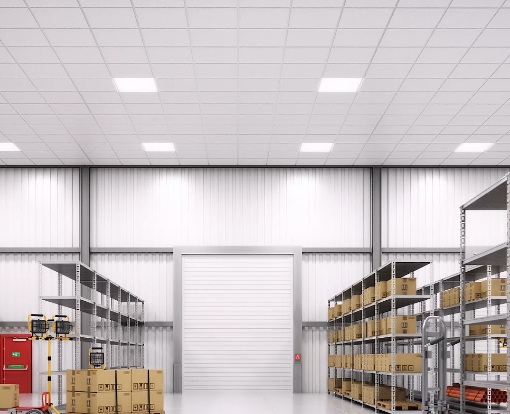The rising challenge of construction waste
As the construction industry shapes our built environment it generates a staggering amount of waste, a silent crisis threatening to bury our progress beneath a mountain of debris. It poses a significant environmental and economic challenge and such is the problem - it demands innovative solutions if we are to have a more sustainable future – writes John Ridgeway.
Statistics paint a worrying picture. According to the World Bank, the construction sector generates a staggering 2.8 billion tons of waste annually, accounting for roughly 33% of global waste generation.
In the US alone, the Environmental Protection Agency (EPA) estimates that construction and demolition C&D debris, represents over 600 million tons annually, constituting nearly 40% of the total waste stream sent to landfills. These are numbers that highlight the sheer volume of construction waste and its undeniable role in landfill pressure.
Several factors contribute to construction waste, with specific materials and practices posing major problems. We can see, for example, that over-ordering and similar miscalculations are leading to excess materials being ordered, resulting in unused products that ultimately end up as waste. Inefficient on-site practices, like improper material storage and handling, can also damage materials, rendering them unusable.
Traditional demolition methods, which often involve heavy machinery, leading to the crushing and mixing of various materials, make them unsuitable for recycling, which is further exacerbating the problem. Furthermore, restrictive building codes can limit the use of recycled materials in construction, hindering waste reduction efforts.
These issues highlight the need for a multifaceted approach, targeting not just materials, but also design practices and project management strategies. There is also a hidden environmental and economic impact, which needs to be addressed
The hidden costs of construction waste
Landfill waste decomposition releases harmful methane gas, contributing to climate change. Additionally, the extraction of virgin materials for construction has a significant environmental footprint.
The disposal of construction waste also comes with hefty fees, impacting both construction companies and taxpayers. Managing waste effectively reduces disposal costs, translating into financial savings.
Our reliance on virgin materials for construction further depletes finite resources, so encouraging waste reduction and recycling will help us conserve valuable resources for the future.
While some C&D waste finds its way into recycling facilities, the majority ends up in landfills. According to the EPA, only about 56.7% of C&D waste in the US is diverted from landfills through recycling or reuse. This means the remaining 43.3% occupies valuable landfill space and contributes to environmental challenges.

Construction waste recycling involves sorting, crushing, and processing reusable materials like concrete, wood, and metal, but while recycling rates are improving, they still lag behind other waste streams.
That said, there is now a growing awareness of the issue and it is driving innovation in the construction industry. Digital tools like Building Information Modelling (BIM) is enhancing project planning, leading to more accurate material estimates and reducing over-ordering.
Prefabricated building modules constructed off-site are minimising on-site waste by producing pre-cut and pre-sized components. Building with recycled and reclaimed materials is also reducing dependence on virgin resources and decreasing waste generation altogether. Examples include recycled concrete aggregates, fly ash in concrete production and salvaged wood.
Selective demolition techniques that carefully separate materials for recycling are also helping to significantly improve waste diversion rates compared to traditional methods. We are also seeing detailed waste management plans on construction sites that ensure proper segregation, storage and transportation of waste materials for optimal recycling or disposal.
The rise of recycling
Thanks to such initiatives, recycling is playing a more crucial role in diverting construction waste from landfills. Recycled concrete aggregates (RCA) are being processed from crushed concrete and are being used as substitutes for virgin aggregates in new concrete production.
Salvaged and recycled wood is being used for various construction applications, reducing reliance on newly harvested timber and scrap metal from construction sites is being recycled and used to manufacture new construction products, minimising the need for virgin metal.
The construction industry is also embracing innovative technologies to further minimise waste. 3D Printing in construction is allowing for precise material deposition, potentially creating structures with minimal waste compared to traditional methods. Digital tools like computer-aided manufacturing (CAM) that can optimise cutting and fabrication processes, reducing offcuts and waste generation is also playing its part.
Another encouraging development is the rise of deconstruction and material banks. Deconstruction involves carefully dismantling buildings, salvaging materials for reuse in new projects. Material banks act as repositories for these salvaged materials, providing a source for sustainable construction projects.
Furthermore, emerging technologies like plasma gasification can potentially convert construction waste into usable materials like synthetic aggregates or syngas for energy production, innovations which offer promising solutions for minimising waste and creating a more circular construction economy.
Challenges and considerations
Despite the growing focus on waste reduction, many challenges still remain. For recycled materials to become mainstream, there needs to be a consistent demand from construction companies. Incentives and regulations that promote the use of these materials can help overcome market inertia. Ensuring consistent quality and performance of recycled materials is also crucial for wider adoption. In short, clear standards and regulations for recycled materials are essential. In addition, the infrastructure for efficient collection, processing and transportation of construction waste needs to be further developed in some regions.
If we are to make progress, transitioning to a more sustainable construction industry will require a collective effort from various stakeholders. We need government policies and regulations that incentivise waste reduction and promote the use of recycled materials. This could include tax breaks for using recycled content or stricter regulations on landfill disposal of certain C&D waste materials.
While this is already happening, construction companies need to do more to embrace sustainable practices by incorporating waste reduction strategies in project planning and execution. Investing in training for workers on proper waste management and segregation is also key.
Furthermore, incorporating design principles that minimise waste during construction and facilitate future deconstruction for material reuse is crucial. Architects and engineers can also play a role by specifying the use of recycled materials in their projects.
However, while construction waste poses a significant environmental and economic challenge, the growing awareness of this issue has sparked innovation and a collective effort towards a more sustainable future. By implementing strategies like improved planning, sustainable material selection and waste management practices, along with embracing new technologies and fostering collaboration, the construction industry can build a future with minimal waste and a reduced environmental footprint.
This transition, however, requires a shift in mindset, prioritising resource conservation, waste reduction and responsible construction practices. By embracing these principles, we can create a future where the built environment not only serves our needs but also contributes to a more sustainable and resilient planet.
Additional Blogs

Construction’s obsession with blame instead of learning
Construction is one of the most technically advanced industries in the built environment, yet culturally it often behaves like one of the least reflective. When things go wrong and they frequently...
Read moreHow risk Is routinely pushed down the supply chain
Risk is an unavoidable part of construction. Every project involves uncertainty around ground conditions, weather, design coordination, procurement, labour and programme. Yet while risk is inherent,...
Read more

What if Building Control went fully digital?
Building control governs structural integrity, fire protection, energy efficiency, accessibility and countless other aspects of design and construction. Historically, this process has been highly...
Read more